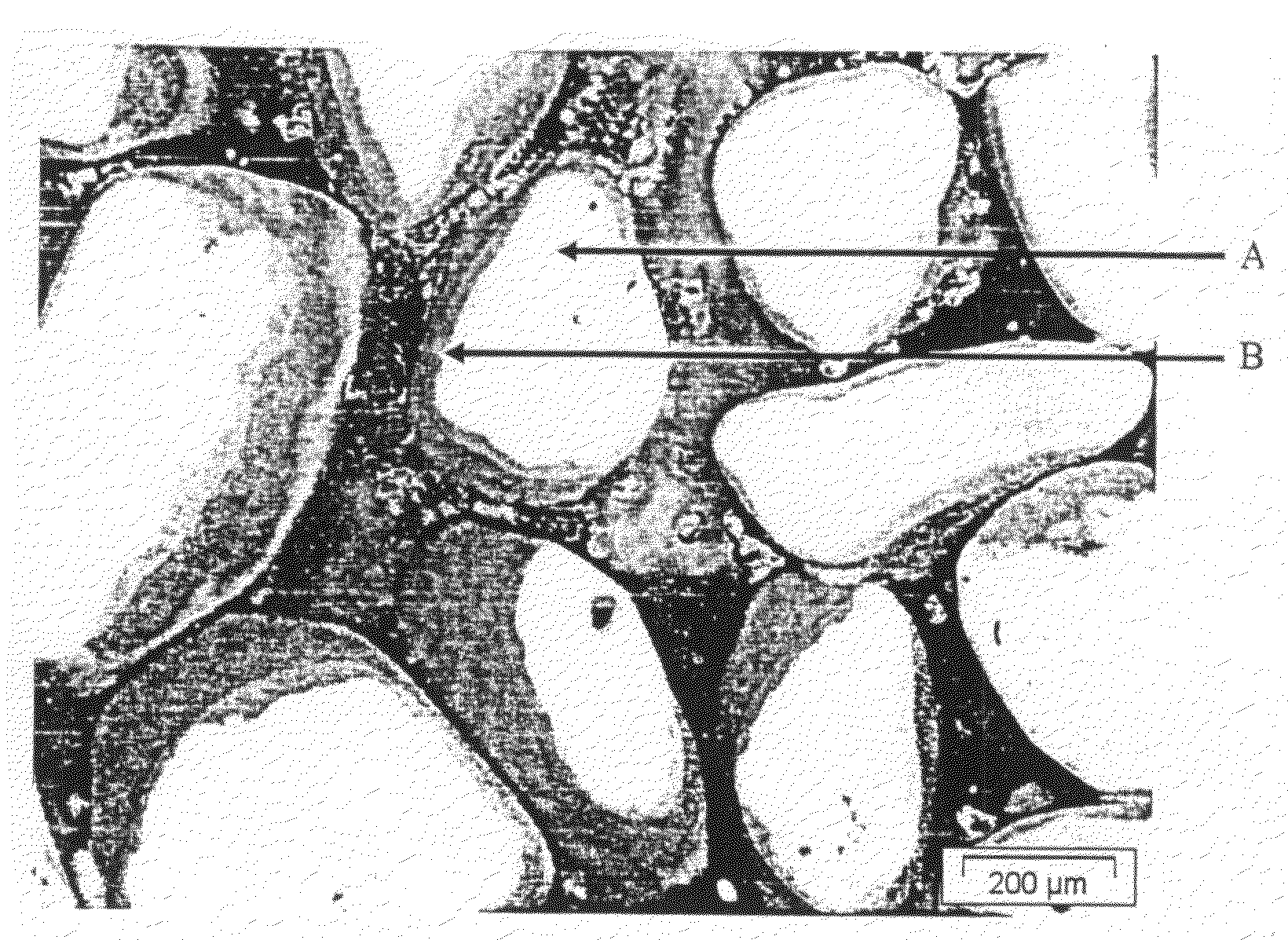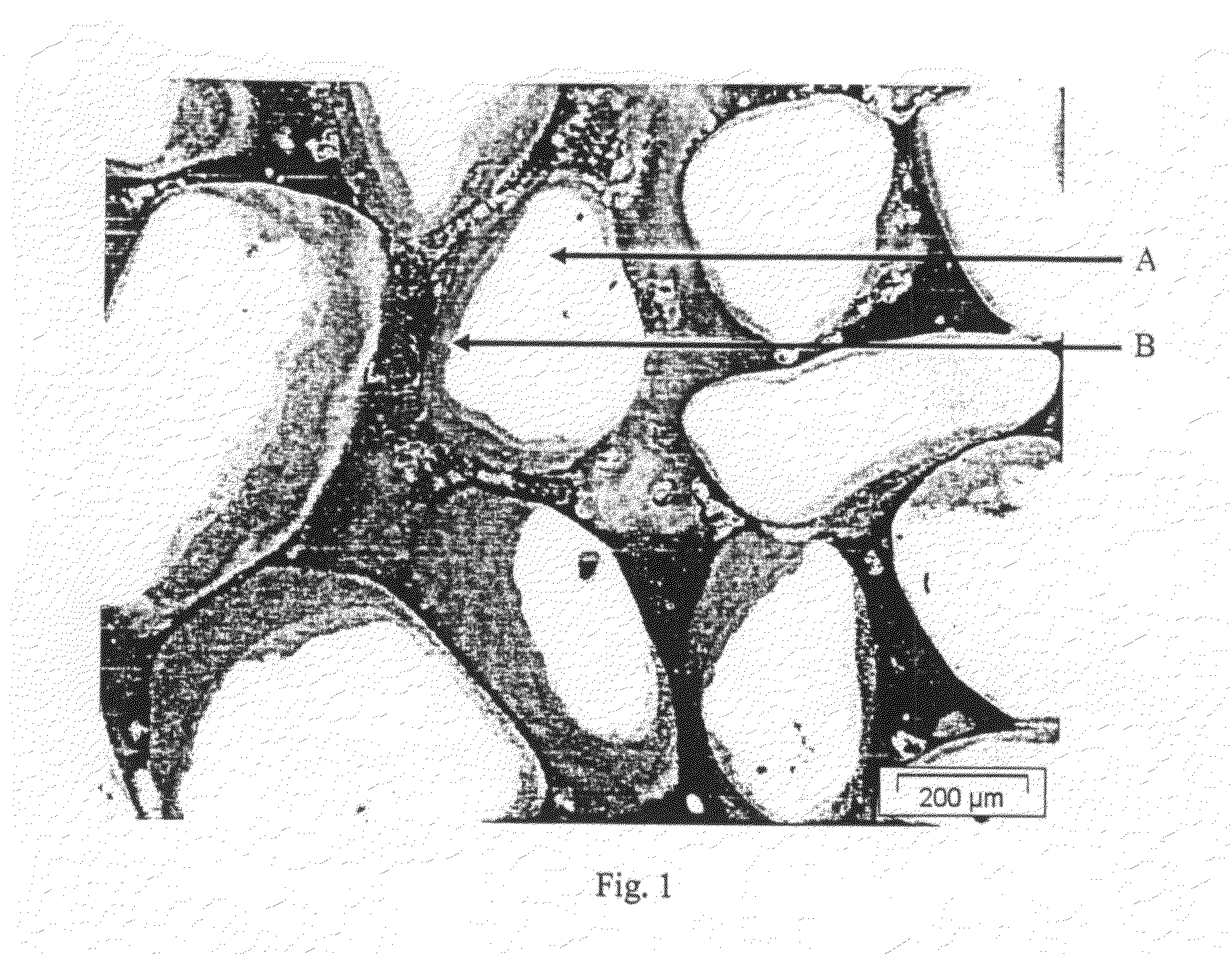Process for the preparation of pigment granules and the use thereof
a pigment granule and granule technology, applied in the field of pigment granules, can solve the problems of energy-consuming removal of water used for preparing slurry by evaporation, and achieve the effects of improving pressed and briquetted granules, good processability, and optimizing the preparation process
- Summary
- Abstract
- Description
- Claims
- Application Information
AI Technical Summary
Benefits of technology
Problems solved by technology
Method used
Image
Examples
example 2
III. Example 2
[0165]The Bayferrox® 160 described above was mixed with the following auxiliaries for 15 minutes in a mixer:[0166]I. 1.5% of polypropylene glycol (average molecular weight about 2000)[0167]II. 3.0% Texapon® 842 (Texapon® 842 is an aqueous solution of sodium octylsulphate containing around 30% of active substance, commercial product from Cognis Deutschland GmbH & Co. KG)[0168]III. 3.0% of a 30% strength aqueous polyethylene glycol solution (average molecular weight about 20 000)[0169]IV. 2.0% of a 45% strength aqueous solution of ammonium ligninsulphonate
[0170]In each case 1.0 kg of the fraction from Example 1 screened over 250 μm was introduced into a granulating pan having a diameter of 70 cm and an inclination of 53° and was rolled for about 3 minutes at 34 rpm. In each case 0.5 kg of the[0171]a) abovementioned mixture I.[0172]b) abovementioned mixture II.[0173]c) abovementioned mixture III.[0174]d) abovementioned mixture IV.
[0175]was introduced in the course of abou...
example 4
V. Example 4
[0184]The Bayferrox® 110 powder used in Example 3 was mixed in a mixer with the following additives in the course of 15 minutes:[0185]I. 5.0% of a 20% strength aqueous solution of a partly hydrolysed polyvinyl alcohol having a low molecular weight[0186]II. 3.0% of an about 35% strength aqueous solution of a polycarboxylate ether[0187]III. 3.0% of an about 30% strength aqueous solution of a polyacrylate.
[0188]In each case 1.0 kg of the screened material (fraction >250 μm) from Comparative Example 3a was then introduced into a granulating pan having a diameter of 70 cm and an inclination of 53° and was rolled for about 3 minutes at about 34 rpm. In each case 0.5 kg of the[0189]a) abovementioned mixture I.[0190]b) abovementioned mixture II.[0191]c) abovementioned mixture III.
[0192]was introduced uniformly in the course of about 3 minutes into the rotating granulating pan and then the total sample was further rolled for another 4 minutes (Examples 4a to 4c).
[0193]For testing...
example 6
VII. Example 6
[0199]1.5% of a 45% strength aqueous solution of polyethylene glycol (average molecular weight about 4000) were added to 20 kg of iron oxide yellow Bayferrox® 920 from Example 5 in a mixer and mixed for 15 minutes. The mixture was pressed on a 200 / 50 compacter (from Bepex, Leingarten) at about 16 kN (3 kN / cm) and then comminuted on a crusher (from Frewitt, Fribourg, Switzerland) having a screen of 1.5 mm mesh size. The comminuted product was screened over a screen having a mesh size 250 μm.
[0200]The Bayferrox® 110 powder used for Example 5 was mixed in a mixer with the following auxiliaries for 15 minutes:[0201]I. 4.0% of a 25% strength solution of sodium caprylate (solvent water:ethanol 1:1)[0202]II. 3.0% of an about 30% strength aqueous solution of a polyacrylate[0203]III. 3.0% of an about 30% strength aqueous polyethylene glycol solution (average molecular weight about 20 000)
[0204]In each case 0.6 kg of the abovementioned compacted, comminuted and screened Bayferro...
PUM
| Property | Measurement | Unit |
|---|---|---|
| density | aaaaa | aaaaa |
| density | aaaaa | aaaaa |
| density | aaaaa | aaaaa |
Abstract
Description
Claims
Application Information
 Login to View More
Login to View More - R&D
- Intellectual Property
- Life Sciences
- Materials
- Tech Scout
- Unparalleled Data Quality
- Higher Quality Content
- 60% Fewer Hallucinations
Browse by: Latest US Patents, China's latest patents, Technical Efficacy Thesaurus, Application Domain, Technology Topic, Popular Technical Reports.
© 2025 PatSnap. All rights reserved.Legal|Privacy policy|Modern Slavery Act Transparency Statement|Sitemap|About US| Contact US: help@patsnap.com



